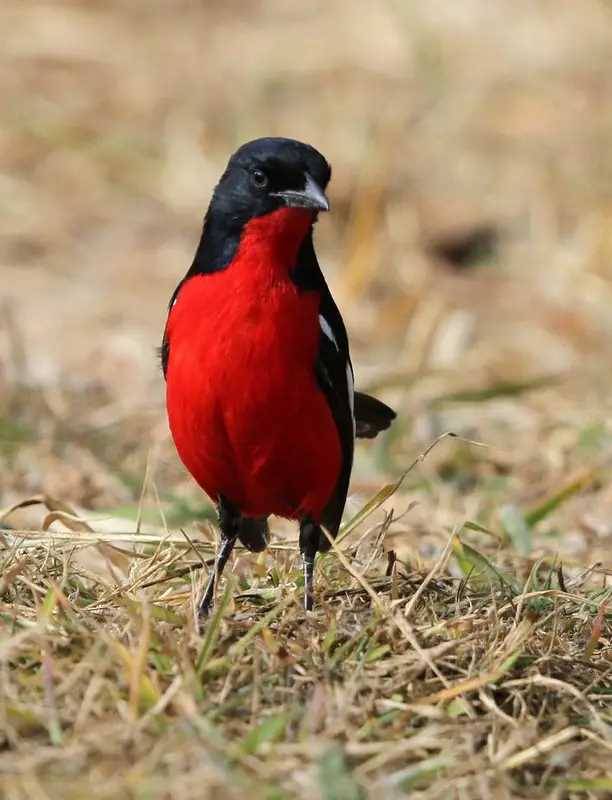

An extremely nimble, somewhat restless bird with a remarkable, striking, black/red color combination and pure white speed stripes.
Meet the Crimson-breasted shrike
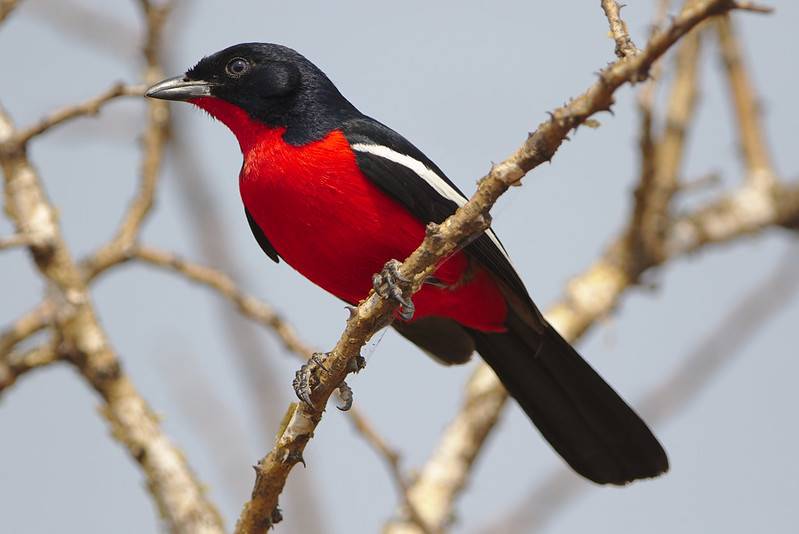
Photo Courtesy of Derek Keats / CC BY 2.0
The crimson-breasted shrike (Laniarius atrococcineus), is also known as the crimson-breasted gonolek, (‘gonolek’ – supposedly imitative of its call). Both sexes of this species are almost indistinguishable from one another. These birds have black upperparts, crown, and tail, with wings being the same color except for a white stripe on each wing.

Photo Courtesy of Bernard DUPONT / CC BY-SA 2.0
Young birds have a mottled barred buff-brown with a bill that is paler than the adults.
There is also a rare yellow-breasted for that was once thought to be a separate species.
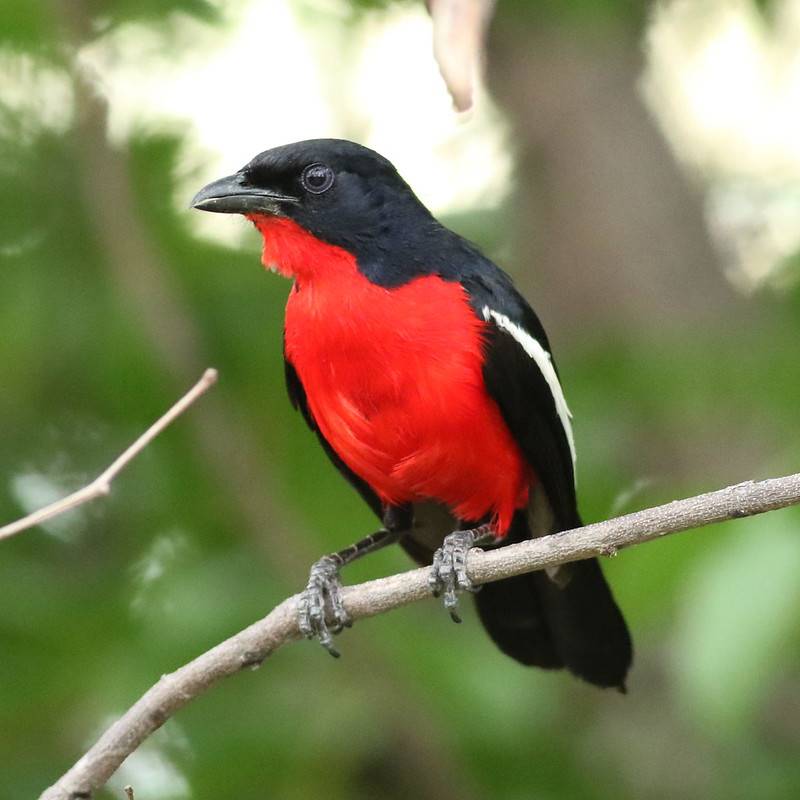
Photo Courtesy of Derek Keats / CC BY 2.0
This species is native to Southern Africa, from Angola and Zambia into northern parts of South Africa, with populations also residing in Nambia, Botswana, and western Zimbabwe.
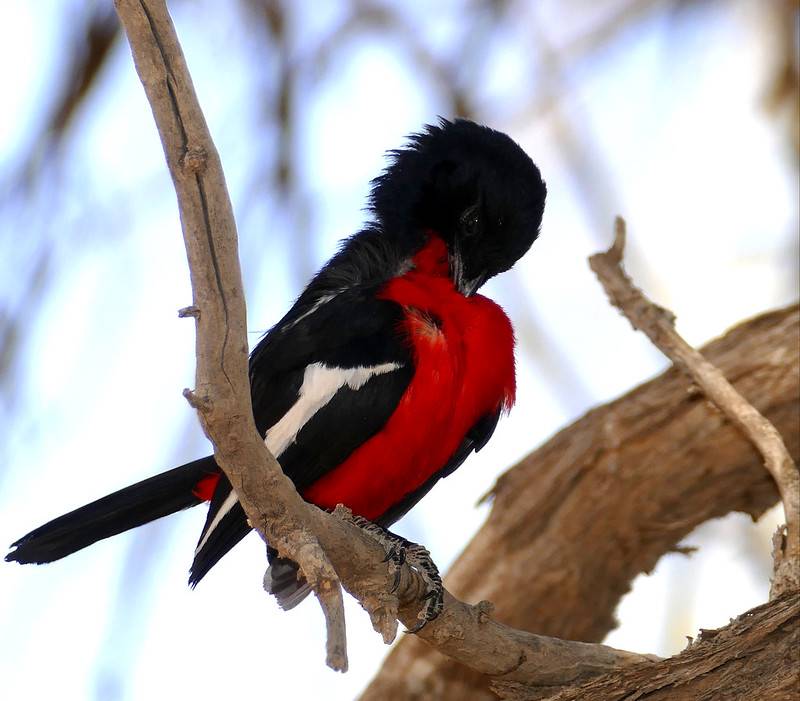
Photo Courtesy of Bernard DUPONT / CC BY-SA 2.0
The Crimson-breasted shrike likes to live in arid areas, especially thornveld, Acacia savanna, semi-arid scrubland, and riparian scrub.
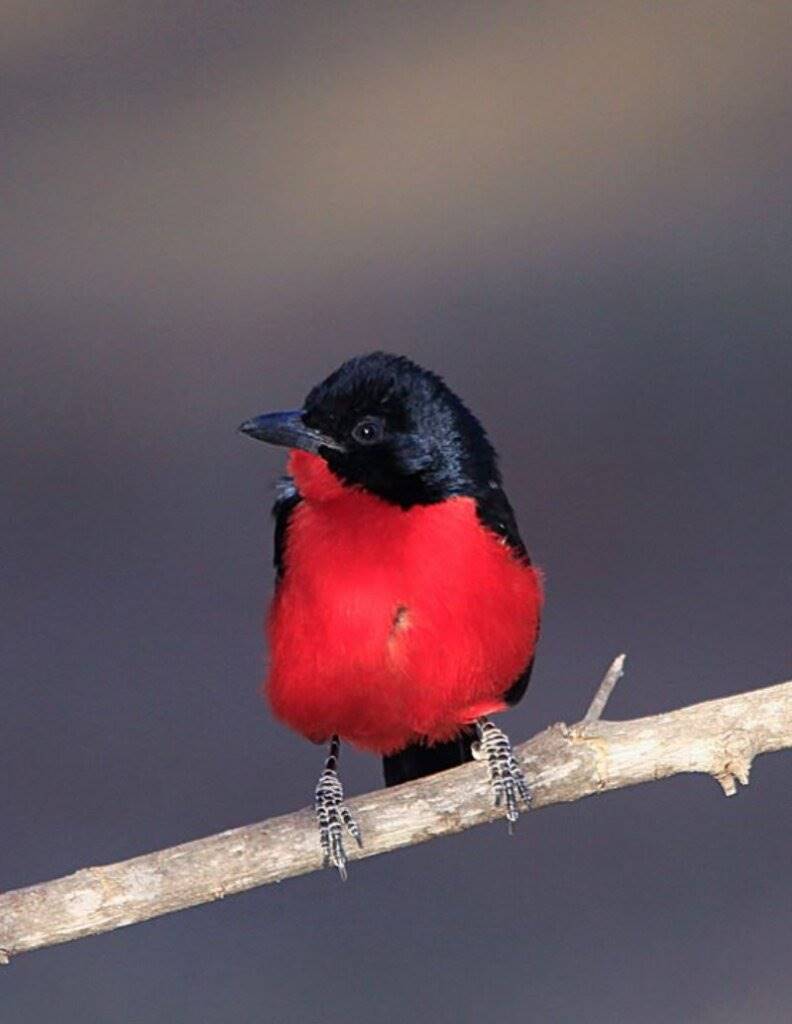
Photo (frame reduced) Courtesy of Derek Keats / CC BY 2.0
This species feeds on prey they glean from leaf litter, tree trunks, and whatever they can find on the ground.

Photo Courtesy of Brian Ralphs / CC BY 2.0
Crimson-breasted shrikes breed between August and January, peaking between October and November. Both the male and female build the nest together which is made almost entirely of Acacia tree bark line with grass and rootlets. They bind the whole structure together with spider’s web, usually placing it on the fork of a tree or sometimes on a horizontal branch.
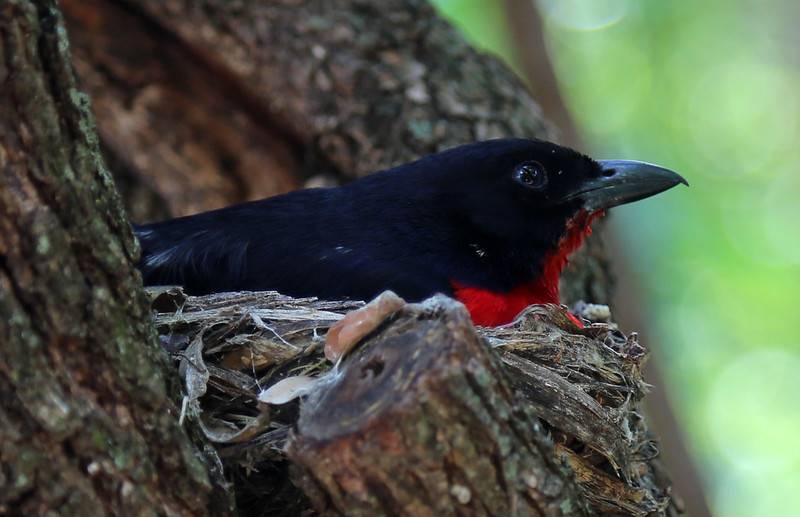
Photo Courtesy of flowcomm / CC BY 2.0
The female then lays 2-3 eggs, which are incubated by both the male and the female for around 15-17 days. They then also feed the hatchlings until they are fully fledged after 18-20 days.
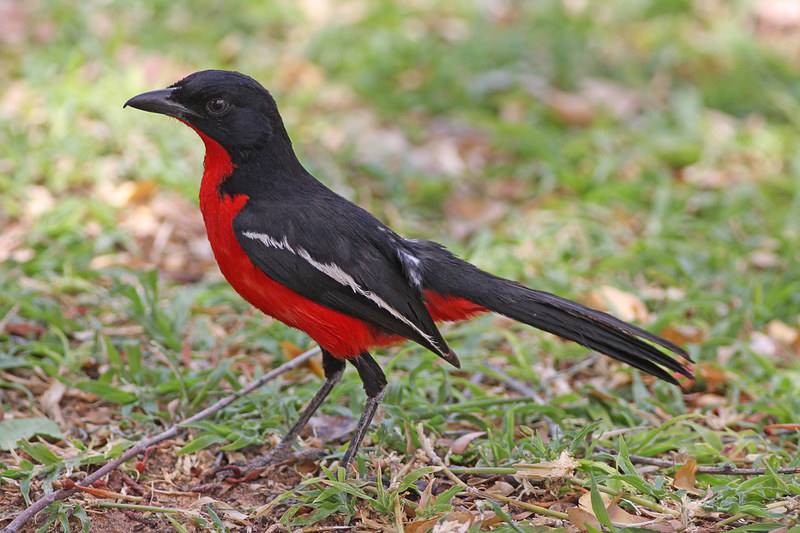
Photo Courtesy of Ron Knight / CC BY 2.0
Due to this bird’s large range, along with being described as fairly common, it is not considered to be under any threat. The population is thought to be increasing due to habitat destruction of other animals creating new areas of habitat suitable to them.
